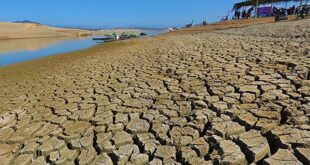
The state weather bureau said the heat index, also known as the discomfort index, can go even higher with the Amihan season expected to last for at least three more weeks.
“We have yet to experience the worst of the heat until the termination of the Amihan season. We predict that in some areas, the temperature could reach as high as 40 degrees especially in areas in Cagayan Valley by April or May,” said PAGASA Climate Monitoring and Prediction Section chief Ana Solis.
While the strong and mature El Niño peaked in February, its lag effect will remain in the next three months, she said.
“Historically, El Niño always has a lag effect…It is only now at the start of March that we will experience its possible impact,” Solis added.
At least 24 provinces are currently experiencing meteorological drought conditions with at least a 60 percent reduction from average rainfall for three consecutive months, or a 20 to 60 percent reduction from average for five consecutive months.
The National Disaster Risk Reduction and Management Council on Thursday said the damage to agriculture due to the impact of the El Niño phenomenon rose to P941 million.
The town of Bulalacao in Negros Oriental has already declared a state of calamity due to damage to agriculture.
The Department of Agriculture has also urged local governments on Mindoro island, which is split into two provinces, to declare states of calamity if warranted.
Western Visayas reported the highest value of agricultural damage with P564 million followed by Mimaropa with P319.75 million, Ilocos with P54.45 million, Calabarzon with P2.75 million, and Zamoanga with P717,527.
A total of 16,709 farmers and fisherfolks as well as 14,854 hectares of crops were affected, NDRRMC data showed.
PAGASA said the onset of the rainy season may be delayed in some areas, which can worsen the situation of drought-hit farmlands.
“The month of May would be critical because of the onset of the rainy season. The onset of the rainy season could be delayed in some areas,” Solis said. — with Rio Araja and Othel Campos
*****
Credit belongs to: www.manilastandard.net
 Atin Ito First Filipino Community Newspaper in Ontario
Atin Ito First Filipino Community Newspaper in Ontario






